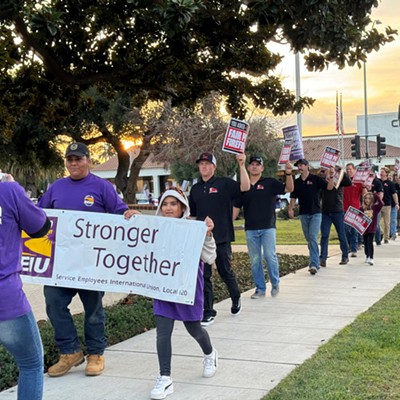Nearly 80 percent of births in northern Santa Barbara County were to Medi-Cal patients in 2011, according to the most recent data available from the county’s 2015 Community Assessment of Maternal Child and Adolescent Health.
That same year, one in 10 children in Santa Barbara County were found to be uninsured, according to the assessment, along with one in four women aged 18 to 64.
Overall the data shows that families in North County are more likely to live in poverty than residents of South County. They’re also more likely to have teen births, according to the assessment, and less likely to have jobs and health insurance.

All those factors can add up to lesser maternal health care, according to Zabrina Cox, a registered nurse, certified doula, and Santa Maria’s coordinator for ImprovingBirth, a national nonprofit organization dedicated to improving maternal care throughout the U.S.
As the local coordinator, Cox was tasked with organizing Santa Maria’s adaptation of the national March for Moms on May 6, when individuals across the country showed support for several recently introduced federal bills that could improve maternal health care and decrease pregnancy-related deaths.
Santa Maria’s event, held from 10 a.m. to 2 p.m. at the Edwards Community Center, was less like a rally and more like a family fun day, complete with a raffle, local vendors, an educational table, and family yoga and pilates.
Several community members showed up to support the federal bills, which would encourage and fund the formation of state maternal mortality review committees, increase overall access to quality maternal health care, and establish improved maternity and family leave policies.
In Santa Maria, Cox said language, economic status, and cultural barriers are often the factors that make it difficult for many community members to access maternal health care.
“I feel like in our community I’d like to raise awareness about what a doula is and increase access to them,” Cox told the Sun. “I think right now we’re at a point where doulas aren’t reimbursed and they can be expensive in our area.”
Doulas, who Cox said provide physical and mental support to women throughout and after their pregnancies, aren’t covered through Medi-Cal. There are only two states that reimburse doulas through Medicare, but Californians pay for those services out of pocket.
Doula services on the Central Coast can cost up to $1,200 for the duration of a pregnancy. It’s a price that Cox said isn’t always affordable for Medi-Cal patients, who make up nearly 60 percent of North County’s population, according to the 2015 community assessment.
Cox said pregnancies are often expensive in general, and can be confusing and lonely without the proper knowledge and resources.
“People need to know more about the resources available in our community and we need more here in Santa Maria,” Cox said, “especially for our Spanish-speaking and Mixteco communities.”
Accessing adequate maternal care can be especially difficult for Mixteco-speaking residents, according to Italivi Chambers, a registered nurse at Marian Regional Medical Center who speaks English, Spanish, and Mixteco.
“They often don’t have insurance or they don’t know where to go or get help, they don’t know how to write or read,” Chambers told the Sun.
Mixteco is not a written language, Chambers said, and few individuals outside the community speak Mixteco, making it extremely difficult for Mixteco-speaking residents to learn about maternal health care resources and options.
For that reason, Chambers is working on a series of maternal health educational videos in various languages for individuals who can’t read or write. The videos, Chambers said, will include information on cesarean sections, medications, and available pregnancy resources. The videos, she said, are just a first step in the right direction.
“For them, to go get help is a big thing,” Chambers said, “but we don’t always have the resources for them. So we just need more support.”









